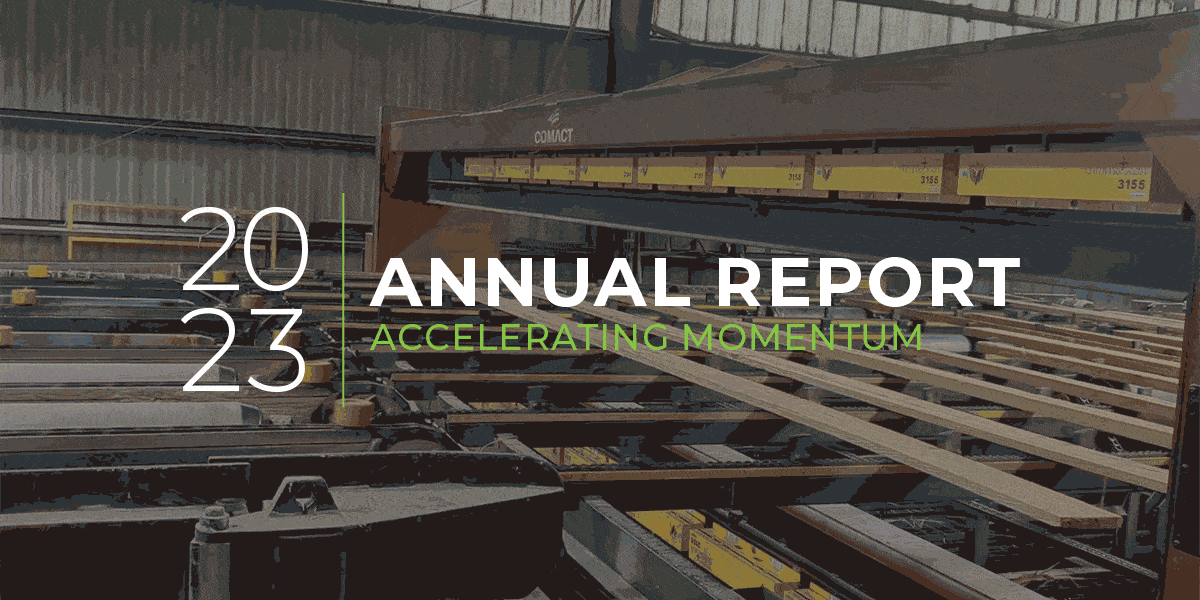HIGHLIGHTS
PROGRAM UPDATES
In 2027 Cycle, the AWC Seeks to Build on Code Change Victories SLB-Sponsored UT Austin Design Studio to Equip Students With Wood Design Knowledge Proof Is in the Science: WoodWorks’ Comparative LCA Series Encourages Confidence in Wood's Benefits Architecture School Profile Plants Seed for Wood Education and CollaborationProgram Updates
In 2027 Cycle, the AWC Seeks to Build on Code Change Victories
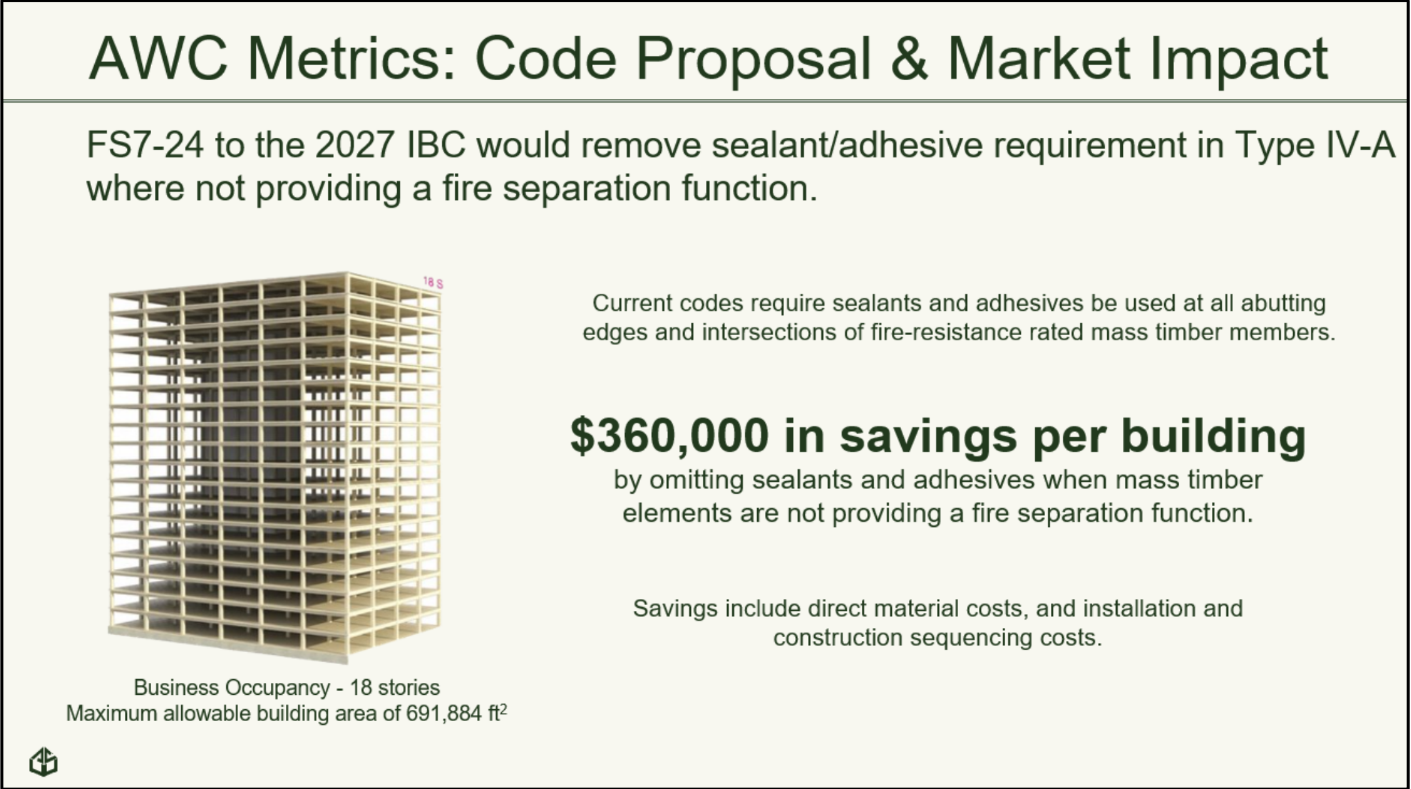
The International Code Council’s I-codes form the basis for building safety codes in all 50 U.S. states, so ensuring the codes remain receptive and favorable to wood is a major priority for the industry. In the 2021 I-code cycle, the AWC and the SLB helped gain acceptance for a set of proposals that allow for tall mass timber construction up to 18 stories, a major catalyst for the growth of mass timber in the United States.
In the 2024 cycle, the organizations supported an approved code change permitting 100% exposed timber ceilings in buildings up to 12 stories. By eliminating the need to cover wood ceilings with materials such as gypsum wallboard, the change provides significant cost and embodied carbon savings that make mass timber more attractive: In a 12-story building, the savings amount to about $2.8 million, or 1.65%, of the construction cost and 355,000 metric tons of CO2.
Gearing up for the 2027 I-codes development process, which officially opened with committee hearings in April, the AWC’s team reviewed over 1,000 code change proposals and submitted 15 of its own, the majority of which are related to having references in the codes to the 2024 Fire Design Specification (FDS). By having the wood industry’s fire design provisions in a single standard and having that standard referenced in the building codes, the industry is capable of more quickly responding to industry changes and designer needs without interference from competing materials in the code development process.
The team applies significant strategic thought to how to approach each position, often coupled with outreach to potential allies to secure support for key positions. This work is critical to growing markets for the wood products industry and ensuring the safety of wood construction.
In addition to the priority to get the FDS referenced in the I-codes, another of AWC’s code change proposals — removing certain sealant/adhesive requirements in mass timber buildings — was requested by design professionals and would make mass timber more cost-competitive with other materials. This change, if approved, would lead to direct material and construction sequencing savings estimated at $360,000 per Type IV-A building.
Additionally, the AWC is active in the consensus development process of ICC 605, the new standard for residential construction in regions with wildfire hazard. While some participants in the process are pushing for allowing only noncombustible or ignition-resistant siding materials in ICC 605, the AWC is arguing for the allowance of wood in structural applications based on the AWC’s recent wildland-urban interface (WUI) fire test results.
SLB-Sponsored UT Austin Design Studio to Equip Students With Wood Design Knowledge
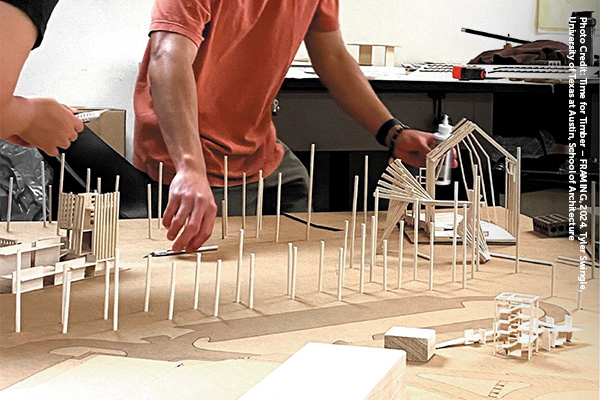
Supported by the SLB, the University of Texas at Austin is pioneering a new approach to architectural education with the next iteration of its innovative design studio, “Time for Timber-FRAMING.” This forward-thinking course not only equips students with the skills needed for modern wood construction systems, but also fosters a deep understanding of wood as a material, its properties, and its role within sustainable architectural practices.
Design studios are a core component of an architecture education, providing students a realistic simulation of what they could encounter in professional practice — moving a theoretical building design from concept through to construction documentation. In “Time for Timber-FRAMING,” students have been exploring advanced techniques involving mass timber products like cross laminated timber while leveraging cutting-edge technologies like augmented reality (AR) and LiDAR scanning.
Through collaboration with the National Forests and Grasslands in Texas, students are engaged in real-world projects, designing wood-based structural systems for an NFGT information center in Lufkin, Texas. Students will then build full-scale prototypes of these systems using softwood lumber products, facilitated through SLB’s sponsorship, to best understand constructability challenges and how the components come together in the real world.
“This combination of design work and material investigation offered students a different comprehensive design experience outside of the typical studio environment through meetings with the NFGT, as well as lumber mills, CLT plants, and foresters,” says the studio’s instructor, Emerging Scholar Tyler Swingle. “Through understanding the various disciplines that contribute to the process of making wood in all its forms, students were able to engage these local processes through design speculations that not only defined space, but imagined new forms of timber construction.”
The SLB’s sponsorship further integrates wood education into the architectural curriculum at UT Austin, not only preparing students for the challenges of modern architecture, but also helping to cultivate a generation of architects who are passionate advocates for wood solutions.
Proof Is in the Science: WoodWorks’ Comparative LCA Series Encourages Confidence in Wood's Benefits
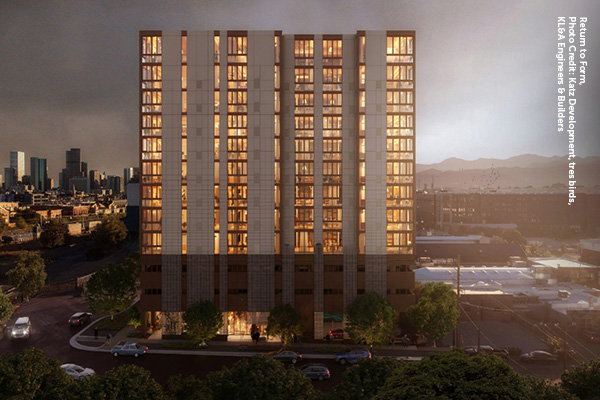
WoodWorks’ new Return to Form Comparative Life Cycle Assessment (LCA) study is the first in a series examining the embodied carbon, speed, and cost of mass timber versus other building systems. The study compares Return to Form, a 12-story, 84-unit residential building designed with mass timber, to functionally equivalent cold-formed steel (CFS) and concrete alternatives. The study was developed as a result of Return to Form’s 2022 Mass Timber Competition award, a program that requires winners to share experiences, design, technical documents, and significant research such as cost analyses and life cycle assessments to promote the transfer of knowledge to other project teams working on mass timber buildings across the country.
Among the conclusions:
- Above the podium, the global warming potential (often referred to as GWP) of the mass timber system is a surprising 73% less than the CFS system and 83% less than the concrete system.
- Mass timber would be constructed two months faster than the CFS system and 4.2 months faster than the concrete system.
- When considering the whole building construction cost, including savings associated with construction speed, the mass timber premium is 1.8% over CFS and just 0.2% over concrete.
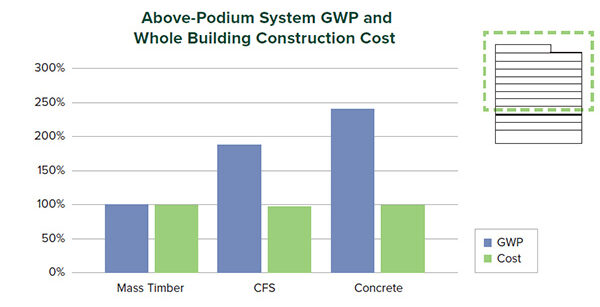
The study is intended to be read together with the series introduction, which details aspects common to all studies in the series, including the methodology, approach, scope, and code compliance of the comparative designs, LCA, and dollar cost analyses.
- Return to Form Comparative Life Cycle Assessment Study
- Mass Timber Comparative Life Cycle Assessment Series Introduction
The objective of WoodWorks’ carbon initiative is to give project teams a license to operate with wood — confidence that building with wood from sustainably managed forests is carbon positive, often significantly so. The goal is to create and share information that addresses the concerns of building designers and gives them confidence that designing with wood is a sustainable choice that benefits the environment.
Return to Form is scheduled to break ground later in 2024. Developed in collaboration with KL&A Engineers & Builders, the Return to Form study will be followed by studies reflecting diversity in terms of location, building use, size, construction type, and mass timber framing scheme, including the Nez Perce-Clearwater National Forest Supervisor’s Office and Burwell Center for Career Achievement.
Architecture School Profile Plants Seed for Wood Education and Collaboration
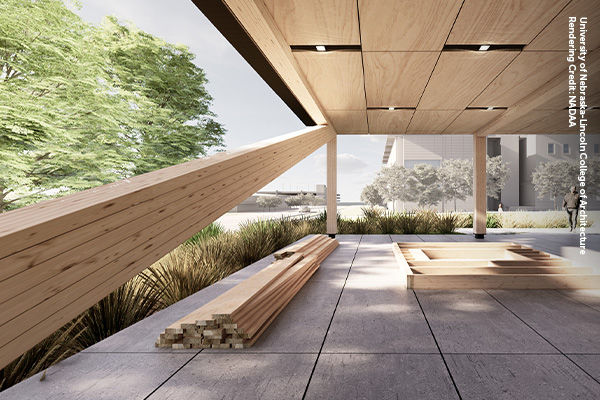
An under-construction expansion of the University of Nebraska–Lincoln College of Architecture covered in a Think Wood project profile serves not only as an excellent case study in the value of mass timber construction for education projects, but also as a teaching tool for the college’s 620 students studying architecture, interiors, landscape architecture, and community and regional planning.
Designed by Boston-based NADAAA and locally based HDR, the project is the first mass timber building in Nebraska, and it will help the school achieve its sustainability and carbon neutrality goals. University of Nebraska–Lincoln College of Architecture Dean Kevin Van Den Wymelenberg says multiple faculty members are conducting classes related to mass timber, and the project’s general contractor has supported regular tours of the construction site for students. “It’s going to be great to have this living laboratory for students for generations to come,” Wymelenberg says.
By covering the project early in its construction phase, Think Wood opened the door for additional collaboration with the SLB’s Education program. SLB Education will follow up to explore opportunities for collaboration and to include more wood systems education in the school’s curricula, as well as to organize visits to the site for nearby schools.
Spotlight
Record-Setting Mass Timber Office Building Opens in Atlanta
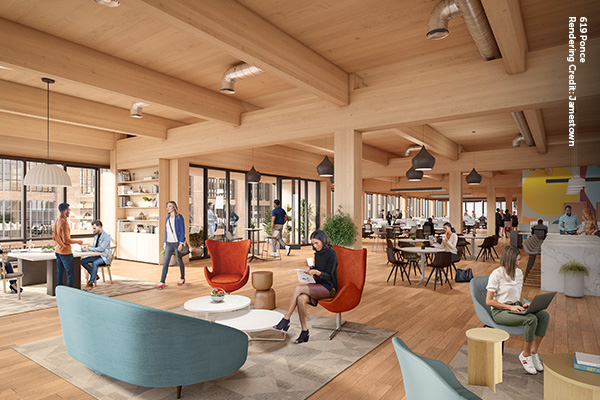
Atlanta’s 619 Ponce, a four-story office building featuring CLT panels with 113,000 square feet of office and ground-level retail space, opened its doors to the public in April, according to an article in The Atlanta Journal-Constitution. One of only a handful of mass timber buildings in Atlanta, the project set records for premium rent rates when Sage Software signed a $70 per-square-foot deal for office space—far above average local office-space rents of roughly $49.98 per square foot—according to the Atlanta Business Chronicle. Home furnishings retailer Pottery Barn occupies an 18,000-square-foot retail space on the ground floor.
Designed by Handel Architects and owned and developed by Jamestown, the project received technical support from WoodWorks, which also held a networking event and tour of the building last year with representatives from Jamestown.
As described in a video for the Seedlings to Solutions campaign, the project is notable for its regional supply chain and use of local yellow pine, features that, when combined with the mass timber’s embodied carbon benefits, resulted in emissions reductions of 75% compared with a typical concrete building, according to Jamestown. Andres Villegas, President and CEO of the Georgia Forestry Foundation, told The Atlanta Journal-Constitution that the project is a blueprint for how “a local forestry supply chain can unlock meaningful reductions in carbon emissions in the built environment while supporting Georgia’s greatest natural asset—its working forests.”
In partnership with the City of Atlanta and with matching funds from the USDA Forest Service’s Wood Innovations Grants and other organizations, the SLB is also supporting GFF’s Atlanta Mass Timber Accelerator Program to encourage more mass timber construction in the city and state. Winners of the accelerator program will be announced this summer.
Industry Resources
FEA's Housing Dashboard
This housing dashboard is provided compliments of Forest Economic Advisors (FEA)
View the April Housing Dashboard
Virginia Tech's Monthly Housing Report
This monthly housing commentary report is a free service of Virginia Tech and is intended to help one gauge future business activity in the U.S. housing market.
March 2024 Reports (released in May 2024)
Part A: March Housing Commentary
Part B: March Economic Conditions


